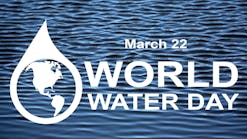Dallas, TX, Nov. 4, 2012 -- Wastewater is, at once, an environmental hazard and a potentially recoverable resource. Generated from a wide array of processes and activities, wastewater may contain hazardous toxins, heavy metals, oils and greases, nutrients, bacteriological components, viruses, pharmaceuticals, and an array of other pollutants. If released into natural or managed waters, these pollutants can contribute substantially to downstream water quality impairments and impact both human health and ecosystems. Fortunately a wide array of wastewater treatment technologies is available, including physical treatments, chemical treatment, biological treatment, screening, and membrane filtration. These technologies, which remove, destroy, or transform pollutants into less harmful by-products, are varied and highly specific based on wastewater characteristics, volume, needed process flow rates, and the ultimate disposal or reuse selected for the treated wastewater.
This report contains comprehensive data on the worldwide markets for membrane treatment technologies (microfiltration, ultrafiltration, nanofiltration, and reverse osmosis), including historic (2007-2011) and forecast (2012-2021) market size data in terms of the dollar value of product shipments. The report identifies key trends affecting the marketplace, along with trends driving growth, and central challenges to further market development. The report also profiles key leading startups and established manufacturers of membrane wastewater treatment technologies that are most relevant to the wastewater industry.
Membrane wastewater treatment technologies that are currently available can be broken down into four categories: low pressure membranes including (1) microfiltration membrane systems, which include membrane bioreactor (MBR), physical microfiltration, and prefiltration applications; (2) ultrafiltration membrane systems, which utilize a smaller pore size than microfiltration, capable of removing bacteria and viruses; and high pressure membranes including (3) nanofiltration, which is also capable of removing most chemical pollutants and multivalent ions, and (4) reverse osmosis, which can also remove monovalent ions (salts). Applications for membrane wastewater treatment technologies include treatment of both industrial and municipal wastewater, in support of discharge to natural waters or other disposal; prefiltration, especially where low pressure membranes are applied in sequence with high pressure membranes; reclamation for recycled water including municipal, agricultural, and industrial reuse; and emerging applications including potable water supply enhancement.
Persistent and ongoing membrane cost reductions over the last two decades, combined with updated technologies that are cutting O&M costs, are driving strong demand for membrane wastewater treatment technologies. Public sector demand and regulatory statutes are also driving more widespread implementation of wastewater recycling, to which membrane technologies are well suited.
Led by growth in the low pressure membrane segment, membrane wastewater treatment technology markets rebounded strongly in 2010 and 2011, following the global economic turndown. By the close of 2012, global membrane wastewater treatment technology markets are expected to reach $817 million, equivalent to a 2007 to 2012 CAGR of 13 percent. With the ongoing economic recovery, demand for membrane wastewater treatment technologies is anticipated to continue to expand, with global markets reaching almost $3 billion by 2021, equivalent to a 2012 to 2021 CAGR of 16 percent. At that time, low pressure membrane technologies will maintain the larger market share, but high pressure technologies will achieve higher percentage growth rates.
The market expansion projected for membrane wastewater treatment technologies is rooted in industrial productivity and development and expansion of municipal and packaged wastewater treatment systems. Key regional considerations include trends in upgrading of existing facilities, demand for new facilities, shifts towards higher wastewater control standards in Asia and especially in China, and control and removal of emerging pollutants such as pharmaceuticals. As technology cost and operation period energy requirements for membrane technologies continue to decline, membrane wastewater treatment technologies are expected to find application across a broadening range of industrial and municipal installation, including strong increases in wastewater recycling, as well as increased and enhanced industrial process water reuse and recycling for non-industrial uses. Demand for reclamation is particularly strong in arid regions where limited water supply is available. In these instances, treating wastewater for reuse is often preferable to desalination or long range procurement fresh water from geographically distant sources.
###


